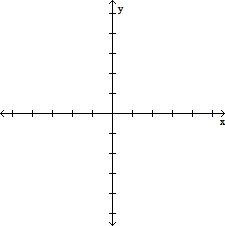Determine the values of x for which the function, as represented by the graph, is continuous. If the function is not continuous, determine the reason.
A. Continuous for all x
B. Not continuous at x = 1; function not defined
C. Not continuous at x = 0; small change
Not continuous at x = 1; function not defined
D. Not continuous at x = 0, x = 1; function not defined
Answer: A
You might also like to view...
Determine if the series converges or diverges. If the series converges, find its sum.
A. diverges
B. converges; 
C. converges; - 
D. converges;1
Determine whether the given function is one-to-one. If so, find a formula for the inverse.f(x) = 10
A. f-1(x) = 10
B. f-1(x) = -10
C. Not a one-to-one function
D. f-1(x) = 
Solve the proportion. =
= 
A. {1} B. {20} C. ? D. {120}
Complete the following:(a) Use the Leading Coefficient Test to determine the graph's end behavior.(b) Find the x-intercepts. State whether the graph crosses the x-axis or touches the x-axis and turns around at each intercept.(c) Find the y-intercept.(d) Graph the function.f(x) = -2(x - 2)(x + 3)3
What will be an ideal response?